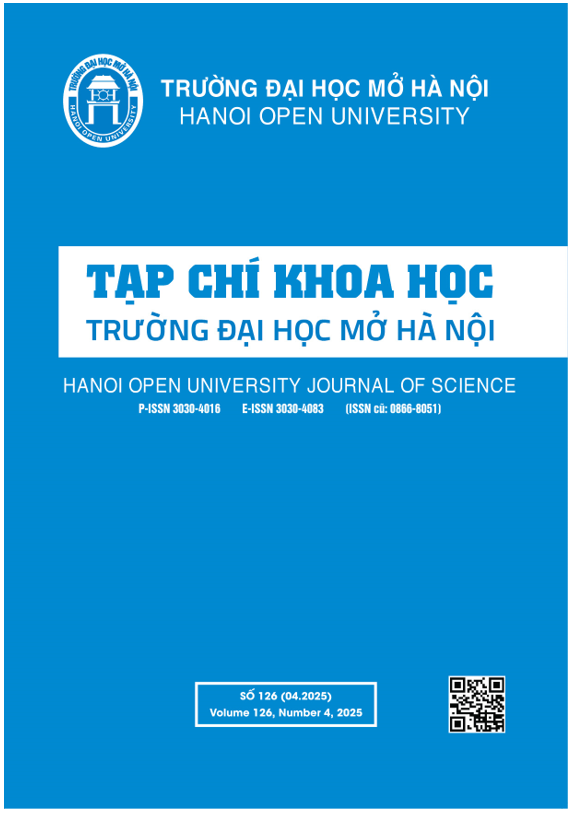SOME LITERATURE REVIEW ABOUT WELLNESS TOURISM
DOI:
https://doi.org/10.59266/houjs.2025.564Keywords:
tourism, wellness, development, wellness tourism, literature reviewAbstract
Wellness tourism has become a popular and developed form of tourism in some countries such as the USA, India, Korea, Japan, Singapore, China, Thailand, Indonesia, etc. Wellness tourism has become a new and rapidly growing trend in the global tourism market, thus bringing new changes in customer base, services, and products provided. This is also an open topic for researchers related to tourism, wellness tourism, and wellness tourism development. The article focuses on clarifying some literature reviews related to wellness tourism, thereby finding research gaps for future studies in this field.
References
[1]. Bočkus, D., Vento, E., Tammi, T., Komppula, R., & Kolesnikova, N. (2023). Comparing the motivations behind wellness tourism in three source markets. European Journal of Tourism Research, 33, 3303-3303.
[2]. Chen, K. H., Chang, F. H., & Tung, K.X. (2014). Measuring wellness-related lifestyles for local tourists in Taiwan. Tourism Analysis, 19(3), 369-376.
[3]. Damijanić, A. T. (2020). Travel motivations as criteria in the wellness tourism market segmentation process. Academica Turistica-Tourism and Innovation Journal, 13(2).
[4]. Dillette, A. K., Douglas, A. C., & Andrzejewski, C. (2021). Dimensions of holistic wellness as a result of international wellness tourism experiences. Current Issues in Tourism, 24(6), 794-810.
[5]. Dimitrovski, D., & Todorović, A. (2015). Clustering wellness tourists in spa environment. Tourism Management Perspectives, 16, 259-265.
[6]. Dunn, H. L. (1959). High-level wellness for man and society. American Journal of Public Health and the Nation’s Health, 49(6), 786-792.
[7]. Forlani, F., Dini, M., & Pencarelli, T. (2022). The importance of food and beverages in wellness experiences: a cross-continental analysis of tourists’ perceptions. British Food Journal, 124(13), 520-540.
[8]. Kim, E., Chiang, L., & Tang, L. (2017). Investigating wellness tourists’ motivation, engagement, and loyalty: In search of the missing link. Journal of Travel & Tourism Marketing, 34(7), 867-879.
[9]. Konu, H., Tuohino, A., & Komppula, R. (2010). Lake Wellness—a practical example of a new service development (NSD) concept in tourism industries. Journal of vacation marketing, 16(2), 125-139.
[10]. Koskinen, V., & Wilska, T. A. (2019). Identifying and understanding spa tourists’ wellness attitudes. Scandinavian Journal of Hospitality and Tourism, 19(3), 259-277.
[11]. Kukkonen, I., & Sarpila, O. (2021). Gendered experiences of appearance- related perks and penalties in Finnish labor markets. Nordic journal of working life studies, 11.
[12]. Liu, L., Zhou, Y., & Sun, X. (2023). The impact of the wellness tourism experience on tourist well-being: The mediating role of tourist satisfaction. Sustainability, 15(3), 1872.
[13]. Meikassandra, P., Prabawa, I. W. S. W., & Mertha, I. W. (2020). Wellness Tourism In Ubud.“A Qualitative Approach To Study The Aspects Of Wellness Tourism Development”. Journal of Business on Hospitality and Tourism, 6(1), 79-93.
[14]. Mueller, H., & Kaufmann, E. L. (2001). Wellness tourism: Market analysis of a special health tourism segment and implications for the hotel industry. Journal of vacation marketing, 7(1), 5-17.
[15]. Ngo, T. T. T. (2022). A wellness tour package proposal for Vietnamese customers. Saigon Star Travel Company.
[16]. Nguyen, T. P. N., Bui, P. M., & Dang, T. T. (2022). Tourist demand for wellness tourism in Vietnam: a case study in Ba Vi National Park. Journal of Science Social Science 67(4):48-56 DOI:10.18173/2354-1067.2022-0060.
[17]. Rickhi, B. & Aung, S. (2006). Wellness is a state of mind, body and spirit. Complementary and alternative health affiliate of the Canadian health network.
[18]. Sheldon, P. J., & Bushell, R. (2009). Introduction to wellness and tourism. Wellness and tourism: Mind, body, spirit, place, 3–18.
[19]. Tran, D. C. (2018). Experiences in developing health care tourism in China and some northeast Asian countries – suggestions for Vietnam. ITDR.
[20]. Tran, T. P., & Vu, H. G. (2024). Some theoretical basis and experience for developing wellness tourism. Hanoi Univerisity Journal of Science, P-ISSN 3030-4016, E-ISSN 3030-4083, Volume 118 (08/2024), p. 65-72, DOI: 10.59266/houjs.2024.446.
[21]. Tuzunkan, D. (2018). Wellness tourism: What motivates tourists to participate. International Journal of Applied Company. Engineering Research, 13(1), 651–661.
[22]. Ullah, H., Iqbal, J., & Gill, S. A. (2021). A conceptual framework for sustainable tourism during Pandemic COVID-19. Journal of Management Practices, Humanities and Social Sciences, 5(2), 10-20.
[23]. Uysal, M., Sirgy, M. J., Woo, E., & Kim, H. L. (2016). Quality of life (QOL) and well-being research in tourism. Tourism management, 53, 244-261.
[24]. Vu, N. (2018). Developing wellness tourism associated with hot springs in Vietnam. ITDR.
[25]. Wang, L., Togtokhbuyan, L., & Yadmaa, Z. (2021). Visual analysis of the international wellness tourism WOS literature from 1992 to 2019. International Journal of Spa and Wellness, 4(1), 1-16.
[26]. Wellness, 4(1), 1-16. Wendri, I. G. M., Bakta, I. M., Suprapti, N. W. S., & Ardika, I. W. (2019). Various factors contributive toward tourist intention in enjoying wellness tourism. International Journal of Linguistics, Literature and Culture, 5(3), 61-70.
